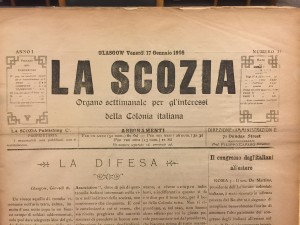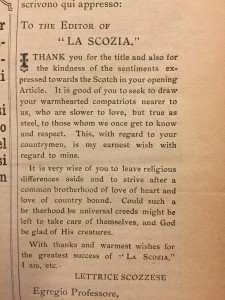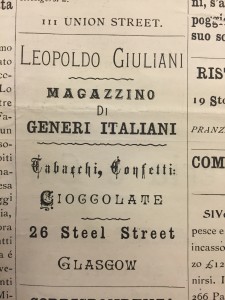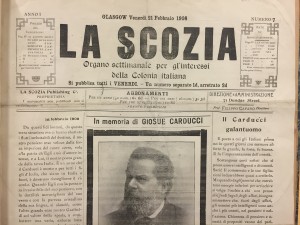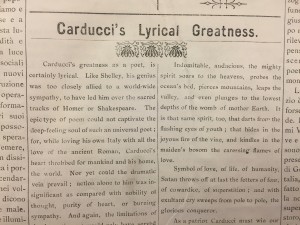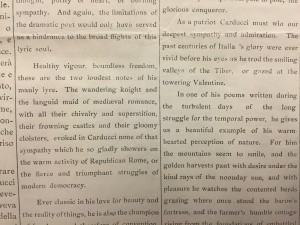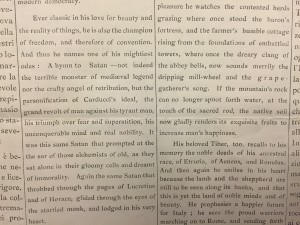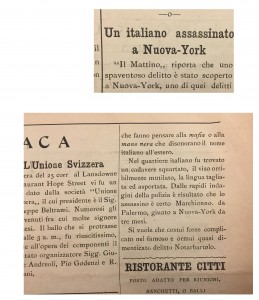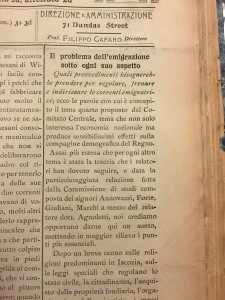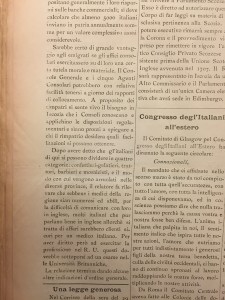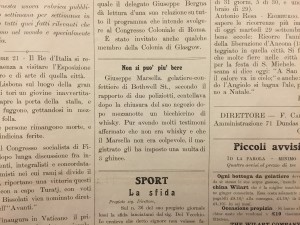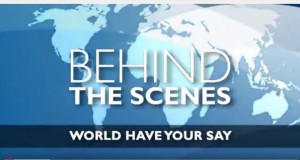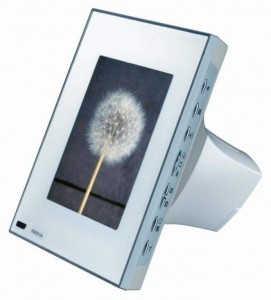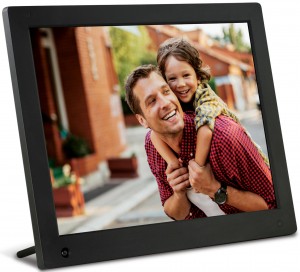Jun
9
Remembering Anthony Bourdain
June 9, 2018 | Leave a Comment
In 2003 — after reading “Kitchen Confidential” for the umpteenth time. I finally made it to Brasserie Les Halles in New York. Tony had long since stopped cooking there and was, I think, “Executive Chef” — a title upon which, if I recall correctly, he unloaded much deserved derision.
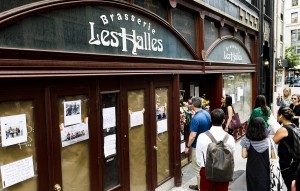 I remember the onion soup — superb and also the chefs, they seemed to be all Hispanic which, if you know your KC, means tough, mean and dedicated. Also, there was a mini butcher’s display immediately in front of you as you went in the door. A nice touch which had the added benefit of scaring away vegetarians.
I remember the onion soup — superb and also the chefs, they seemed to be all Hispanic which, if you know your KC, means tough, mean and dedicated. Also, there was a mini butcher’s display immediately in front of you as you went in the door. A nice touch which had the added benefit of scaring away vegetarians.
A few years later, in 2006, I had just started at the BBC World Service and the boss wanted someone to react to the news that New York’s health commissioner was about to ban trans fats in the city’s restaurants. I began to mull over the usual suspects: over-earnest health and safety campaigners, snobbish food critics, dreary jobsworths from the restaurants association etc etc but in the end I decided to try and get someone who wouldn’t necessarily be jumping for joy.
I remember how an e-Mail sent off more in hope than expectation to Tony’s publicist was met with a positive response. The result was this brilliant interview by the one and only Roger Hearing. It ends with a great quote which is as good an epitaph as any for the greatest ever hoodlum-turned-writer-turned-chef-turned-food-guru:
“Unaged cheeses from Europe. Flower peppers from China. Cute little game birds from France. Stinky cheeses from Sardinia. Things like that. Good stuff!”
Mar
28
Let’s Get the Blockchain into the London Design Museum
March 28, 2018 | Leave a Comment
Many thanks to the wonderful folks at dezeen for letting me put forward the case that the Blockchain is a sublime piece of design.
And if you’re really interested you can also check out my petition on change.org to get the London Design Museum to recognise it as such . . . I must confess the petition is looking a bit anaemic, it hasn’t quite grabbed the world’s consciousness as much as I’d hoped.
Apr
18
La Scozia — Scottish Italians in 1908
April 18, 2017 | 3 Comments
La Scozia was an Italian language newspaper for Scottish Italian immigrants. It was weekly and ran for about 48 issues or so in 1908 (some weeks were skipped, some weeks had a double-issue covering 2 weeks). It described itself as “A weekly organ for the interests of the Italian colony”. More information about it can be found here in Giancarlo Rinaldi’s excellent overview at BBC Scotland. Thanks to Giancarlo’s prodding I dug out some old clippings of my own of La Scozia from a trip to the British Library I made quite some time ago when I was doing some family research.
Issue 1
Front page of issue No 1 from 17th Jan 1908:
Correspondence
This letter from a female correspondent (printed in issue 2 or 3 I think) is one of the rare occasions in which the English language was used in La Scozia. It’s a hint of the slight wariness that existed between the Scottish and Italians in the early days:
Learning English
La Scozia ran an occasional English tuition column. This one shows how food is always front and centre of the Italian psyche:
Adverts
This advert shows an example of some of the great typefaces of yore. Anyone considering opening a new gelateria should take a look at this incredible lettering:
Culture
Giosuè Carducci was an Italian poet an nobel-prize winner. Issue no 7 of La Scozia paid tribute to him after he died (quite some time before according to Wikipedia — early 1907). La Scozia commissioned a rather florid essay by a Francis Graham (who is this scholar, does anyone know?) who described Carducci as a “champion of freedom”. The fact that this essay was printed in full and in English indicates the editor really wanted as many people as possible to know about the great man:
The Mafia
This article warns Italians away from members of the “Mano Nera” (Black Hand). This was a crude precursor to the Mafia and seems to have been more prevalent in the US than in the UK. Basically they came up to you and asked for money, if you refused they would burn down your business or beat you up. This brief summary article talks of how the Black Hand “does dishonour to Italy” and recounts the rather entertaining tale of a Black Hand member who tried to plant a bomb in Pittsurgh but was apprehended by a dog.
This second article from another edition is not so funny. It describes a brutal murder in New York where someone’s tongue was cut out. The author seems sure the murderer was “Marchionno from Palermo” and goes on to speculate that this same man was involved in the notorious but forgotten “Notarbartolo” case — the 1894 Mafia slaying of Emanuele Notarbartolo, the president of the Bank of Sicily.
In Giro . . . In and around Scotland
This is an example of the ‘In Giro…’ column described by Giancarlo Rinaldi at the link at the top. It mentions the special ice-creams in Motherwell of a Mr Verecchia and a C. Coletti. This was Cesidio, the brother of my great-grandfather (also a confectioner):
Immigration
This lengthy column head outlines “All aspects of the problem of emigration” from the point of view of the newly-arrived immigrant to Scotland. It seems some “Central Committee” had come up with a report on the topic (unsure what this body actually was) and wanted to “regulate, restrain and direct the immigrant flow”. The column goes on to mention “the very sensitive effects” immigration can have on “the demographic structure of the Kingdom.” La Scozia — primarily through its editor Filipo Cafaro — was always keen to urge integration.
It seems the great and the good of the Italians at the time were involved in putting this report together including a Mr Forte — possibly Charles, later Baron Forte. The article goes on to estimate the total number of Italians in Scotland at that time as being 8,000 and that their professions could be split into 4: confectioners/gelatieri, restauranteurs, barbers and mosaic workers. It also mentions that “emigration to Scotland is not advisable” as there is no guarantee of work. Also of interest is the call for the local consulate and officials to exert on new immigrants “a certain moral and material protection”.
An expensive snifter
This brief report describes how a Mr Marsella was fined for drinking whisky after midnight. Harsh.
Mar
24
World Have Your Say — Top 5 moments
March 24, 2017 | 1 Comment
I first heard of World Have Your Say towards the end of 2006 when an application to the BBC’s work experience web site was answered with an e-Mail asking if I’d be interested in doing a couple of weeks on WHYS. I was pretty pleased with that. Leaving an IT career for a journalism degree in your thirties usually means you’re going to get pigeon-holed in the box marked geek. I was approaching the end of my journo course and was starting to think about jobs and I was being realistic about my prospects: reviewing gadgets for Stuff mag would be fun but probably not very fulfilling, documenting the UK IT world for Computing sounded crushingly dull but was probably the best I could hope for. In quieter moments I thought maybe, just maybe I’d get a gig on the tech page of one of the broadsheets or a business weekly but broadcasting, for some reason, never really registered in my job hunt despite the fact that I’ve been listening to R4 since I was knee high and 5Live and LBC for many, many years too. I was firmly in the print / online mind-set until that e-Mail popped into my inbox.
(Word of advice to anyone else who finds themselves in this position. Listen to the show mentioned in the e-Mail before you call back. I went home and tuned in at 6pm and heard something about floods in Pakistan –so far all very World Service but what was different was that the voices were raw, unedited and live. I even caught an early attempt to get callers in the same area talking to each other — something that WHYS would try again over the years. I think it was Anu Anand behind the mic.)
So I headed over to the World Service for an interview and a few weeks later found myself in very uncharted territory. If you’ve come from the world of corporate America then the rough and tumble of a BBC editorial discussion can leave you reeling not to mention the ramshackle, maze-like corridors of Bush House. The language of radio for a newbie is pretty confusing too as I noted some months later once I’d recovered from the initial shock.
It took a while but I eventually got what WHYS and its innovative editor Mark Sa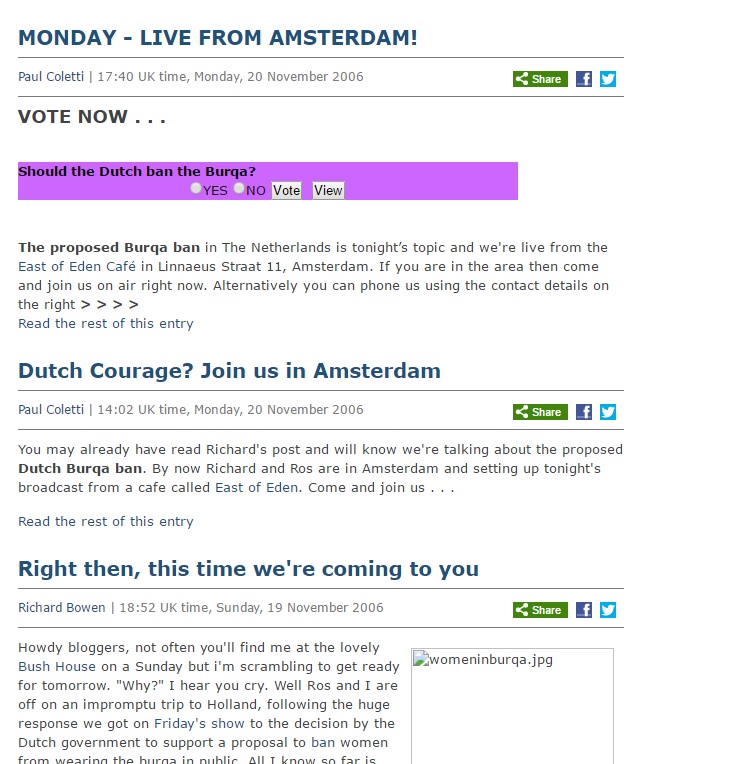 ndell were trying to do: let listeners have their say on the topics they wanted to talk about. This even extended in the early days to letting listeners dial in to the editorial meetings (didn’t last long!). The only real criteria for putting a topic on air was that people had to be talking about it somewhere in the world. There were of course frustrations: Africans love to talk and air their views but sadly the continent is beset with the worst phone lines imaginable. On a given night we’d be able to put on air 1 out of 30 African callers. I started to learn by heart the country codes for places like Zambia (260) and Zimbabwe (263).
ndell were trying to do: let listeners have their say on the topics they wanted to talk about. This even extended in the early days to letting listeners dial in to the editorial meetings (didn’t last long!). The only real criteria for putting a topic on air was that people had to be talking about it somewhere in the world. There were of course frustrations: Africans love to talk and air their views but sadly the continent is beset with the worst phone lines imaginable. On a given night we’d be able to put on air 1 out of 30 African callers. I started to learn by heart the country codes for places like Zambia (260) and Zimbabwe (263).
Over time this call-in aspect of WHYS faded away. The US partner stations didn’t like it — the word “ranting” was bandied about by people in media organisations who really should know better. Just because someone isn’t as eloquent as you doesn’t mean they should be denied their say. Other news organisations were no less snooty — the Economist called WHYS a “dumbed down horror”. Understandably there was a move to more pre-recorded, produced segments but personally I thought losing the call-ins deprived the programme of a little bit of its edgy USP and unpredictability.
But WHYS gave me a chance and I owe it bigly, so on this day when over a decade of programming has come to an end I’d like to thank Mark Sandell, Ros Atkins, Richard Bowen, Priya Shah, David Mazower, Rabiya Limbada, Fiona Crack, uber listener/contributor Lubna and all the others who helped make my introduction to radio so memorable. Here’s my top 5 WHYS moments:
5. Being asked what a uterus was. Lin was on work experience and was from China. She had poor English and sidled over one day while moderating some comments and asked this startling question. I heard giggles behind me and turned round expecting some support from the female members of the team but none was forthcoming and in fact one or two exited stage left very sharpish! Fortunately Lin was pretty perceptive and as I shaped my hands into something (don’t ask!) she twigged and spared me from going any further.
4. Risk taking. Mark Sandell was an editorial risk taker. The more audacious the scheme the more it seemed to appeal and I can tell you there were considerably more hits than misses. Top of the list was choosing to air messages of support for Alan Johnston not long after he was kidnapped in March 2007. We had no idea how long Alan would be gone and therefore no idea how long we could keep up the airing of messages from the likes of Tom Stoppard, Brian Keenan and Freddy Forsyth (recorded by myself in one smooth take btw) but the gamble paid off. When Alan was finally released we learned that he’d been listening. Other risks included seriously provocative debates — such as was Africa better off under colonial rule? Letting Ugandans speak freely about homosexuals in their country and discussing why Britney had shaved off all her hair (well done to Rachael Harvey for presenting and enduring that particular night!). Innovative and daring radio.
3. Co-pressing WHYS. Perhaps Mark Sandell’s biggest risk came one day when WHYS’s presenter Ros Atkins had dropped off grid somewhere in Africa. It was 30 minutes to air and Mark asked me — a few weeks into my time there, fresh faced and still unsure of a studio’s basic layout– if I fancied presenting the programme? I nearly had a heart attack and declined but thankfully Ros eventually appeared. Did I miss my chance? Maybe but I got many chances to co-pres WHYS over the next few years (including one night with the one and only G Money) and it was always a pleasure. Thank you to Ros, Rachael, Peter Dobbie and all the other occasional presenters who put up with my ridiculous and puerile puns.
2. Broadcasting from Issa’s place. WHYS realised early on that it was engendering the kind of listener attention and feedback that to date had been a rarity in the World Service. It was decided to reward some of that loyalty by broadcasting from a listener’s location. Issa in Uganda was chosen and Ros Atkins and a couple of others headed over to somewhere in the Ugandan bush and broadcast live from his back yard. I live-blogged the show — sadly it’s no longer available on the web site but it was memorable for the fact that all through the prog you could hear fires crackling, the low murmur of insects chirping and people generally chilling with beer and food (if memory serves a goat was being roasted in a wheelbarrow) while talking on air. It showed to BBC bosses just how nimble WHYS could be but more importantly this was atmospheric radio at its best which set the bar for the years of outside broadcasts to come.
1. Alan Johnston’s release. This was an epic day. The BBC’s correspondent kidnapped by a Palestinian gang was free and joined World Have Your Say live down the line from Jerusalem (I think). I was co-pressing with Ros Atkins and in the studio with us was was the BBC’s then head of journalism Mark Byford. Alan revealed that he’d been able to listen to WHYS during his captivity and had gained some strength from the messages of support. I’d persuaded Mark Sandell to let me take a bottle of champagne into the studio for some end of the prog larks but the cork popped early and champagne spurted out nearly covering Byford who seemed to take it all with good grace. A wonderful end to a great day.
Dec
4
Technology: capability v expectation
December 4, 2016 | Leave a Comment
Have you ever gone on the hunt for something fully expecting to be overwhelmed by choice, dazzling features and multiple pricing options only to have your aspirations shattered by a pitiful array of products?
The digital picture frame market is a classic example. Customer expectation has vastly outweighed the available product capabilities and has done so for over a decade. It’s tempting to say digi frame manufacturers have rested on their laurels but that assumes they had some to begin with . . . complacency and a shoddy disregard for what customers have been telling them has been the order of the day for a long, long time.
Remember that bit in Mad Men season 4 when Don Draper dashes off a late night missive to the New York Times all about why his company will no longer deal with cigarettes? The letter was a crafty way of differentiating the firm from the crowd in the middle of a crisis but amidst all the self-serving guff about not being able to sleep at night there’s this line which has always stuck with me:
A product that never improves, that causes illness, and makes people unhappy.
True for tobacco in the 1960s. True for digital picture frames in the noughties. I concede the second point might be a bit harsh but a decades worth of buyer’s remorse on a global scale surely counts for some kind of affliction?
Speaking of buyer’s remorse….In 2005 I wanted a digital picture frame and I bought this:
It’s a Nokia SU-4 image frame. It cost £149 and if memory serves you transferred your photos via infra-red which means this product must be one of the few ever sold that came with built-in obsolescence! I remember the frustration of not finding something that could even connect via USB let alone use Wifi. But back then it was about the only thing I could find that would come close to displaying digital photos the way I wanted. It wasn’t that good a device and it prompted me to write my first ever Amazon product review. I gave it 3 stars which was generous. They’re thin on the ground these days which may be this thing’s only saving grace.
Fast forward a decade and I dipped my foot into the digi frame waters once more:
This is the NIX Advance 12 inch frame. Now this cost £99. In other words 33% cheaper than the Nokia but a better product by a factor of 10 or more. Bigger screen. Sharper image and a very useful remote control. This device sat on our shelf and was unused and unloved….why? Quite simply it was a pain to update. It comes with a tiny USB mem stick onto which you load your images . . . naturally I did this once and then never again.
With the vast majority of casual digital images these days being taken on a smartphone owning a NIX meant you needed to import from the phone onto your PC and then transfer from the PC onto the mem stick. A real hassle. Lovers of the NIX will point out that it also has an SD card slot on the side but to me this is a not-very-good sop to the serious photographer community and honestly . . . has anyone, anywhere in the world ever used this feature?
Now we’re in 2016.
This is the Aura Frame. It’s a superb bit of engineering: from the box it comes in to the cord on the power lead…everything screams quality. The tiny, suede pouch in the box containing the wall-mount fixings is made with more thought and precision than the entire Nokia product range. It costs £300 — it’s definitely at the premium end of the market.
It’s got high resolution and a quality screen which means even though it’s half the size of the NIX your images will look way, way better on this. Also somehow it seems to get the brightness just right for each image (is there something going on automatically there??). There’s gesture control (kids love this!) and some nice sensors which mean it displays a different photo each time you wake it up by motion.
What really seals the deal though is the smartphone integration. Basically you send your images to it using the App and this can even be done automatically — the App can scan your albums, detect a new photo containing the face of someone you know and zzzzip . . . up it goes with NO WIRES and NO USB STICKS. Wonderful.
11 years since Nokia rushed out their crummy product, finally the technology has caught up with the customer.
Interestingly the tobacco industry has also finally started to move. In the past 3 years or so we’ve seen vaping technology grab significant market share and just this past week we’ve seen a major firm launch a new HNB (heat-not-burn) tobacco product. For an industry that was at the fag-end of its life so to speak, there’s a surprising amount of innovation going on.
I wonder what Don would have made of it?
PS — this is the initial Aura release and I feel there’s many, many great things to come including bigger, thinner frames. I’d also like to see:
- Cut the cord! Could be challenging technically but a photo frame on your wall with a power lead dangling down is an eyesore. How about a battery option?
- License the Aura app technology out to the high-end photo manufacturers. Wouldn’t it be great if Nikon’s SnapBridge technology could incorporate the Aura tech? In other words straight from your D700 to the frame . . . no need to go via the smartphone.
- Android version of the Aura app. At the moment it’s iOS only.
Nov
20
Rediscovered track of the month: Nov ’16
November 20, 2016 | Leave a Comment
Leonard Cohen, Everybody Knows
Oct
18
Rediscovered track of the month: Oct ’16
October 18, 2016 | Leave a Comment
The Rolling Stones, The Harlem Shuffle
Sep
6
Rediscovered track of the month: Sep ’16
September 6, 2016 | 1 Comment
Manic Street Preachers, A Design for Life
